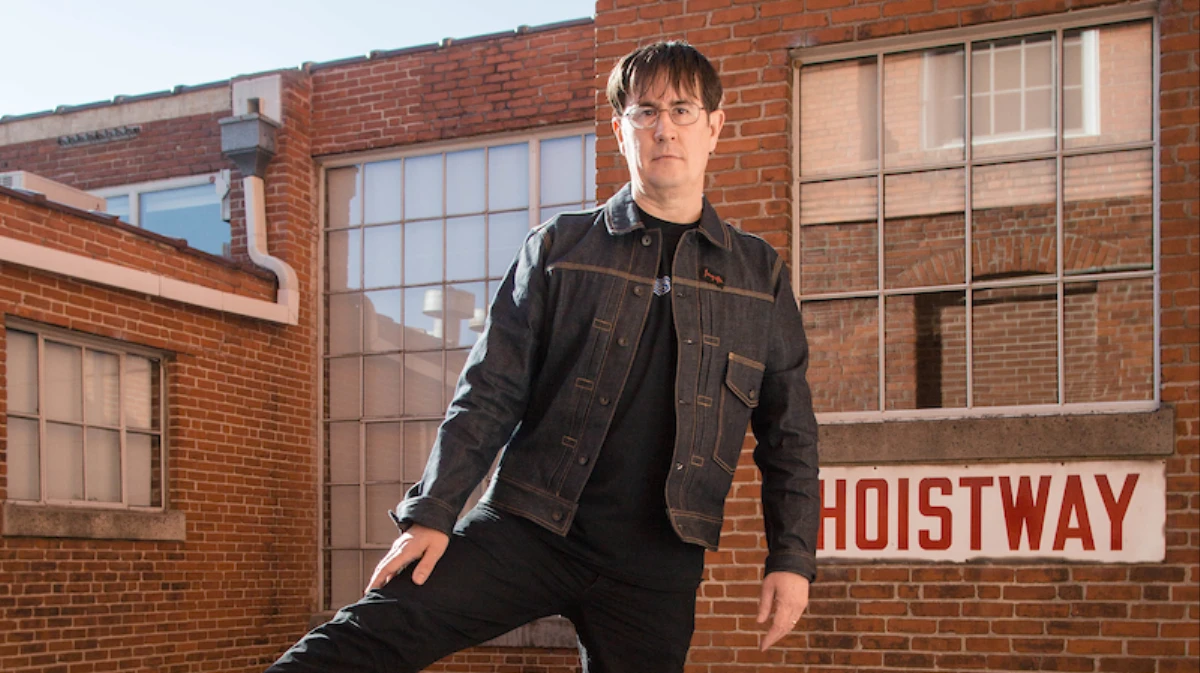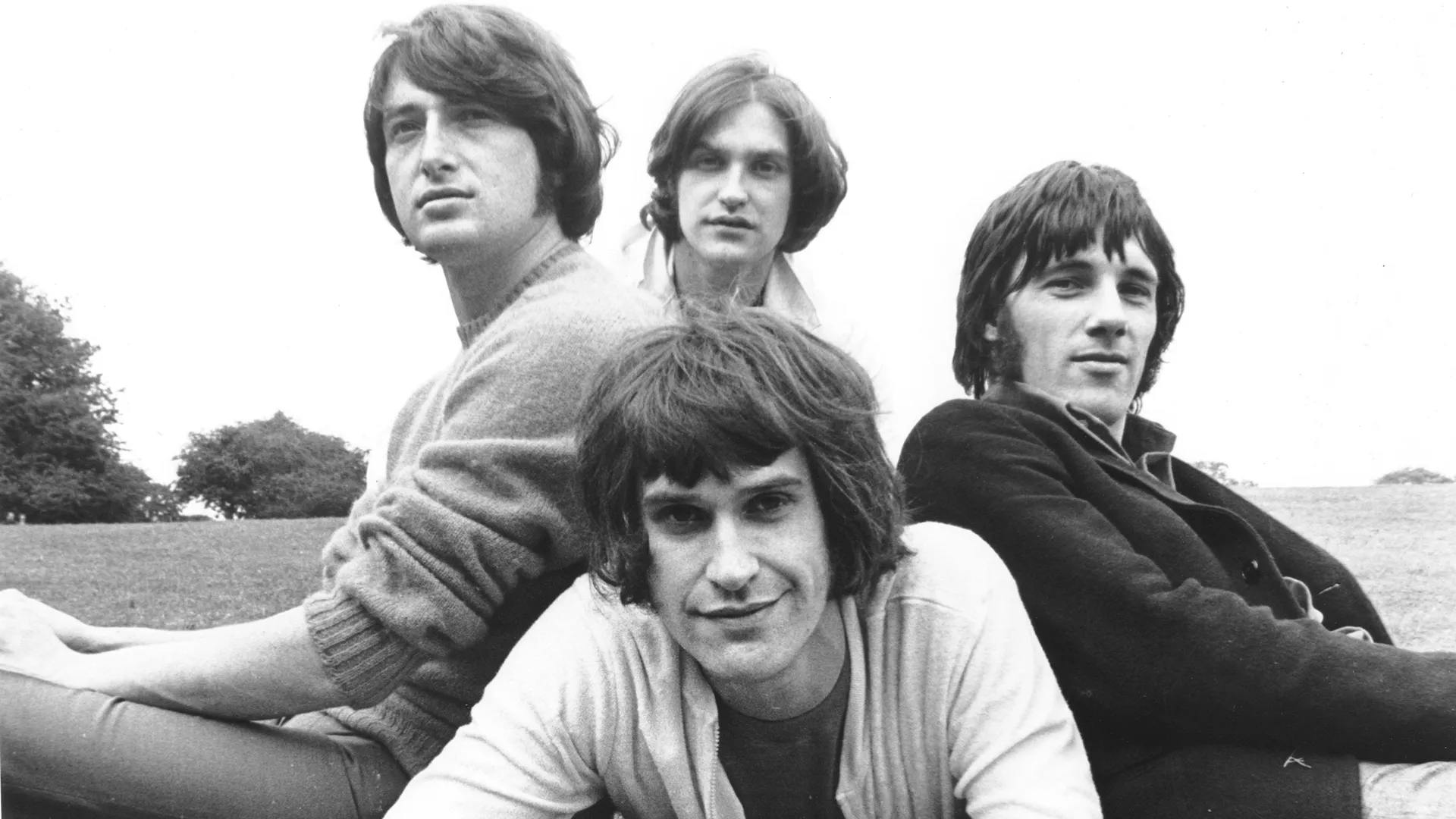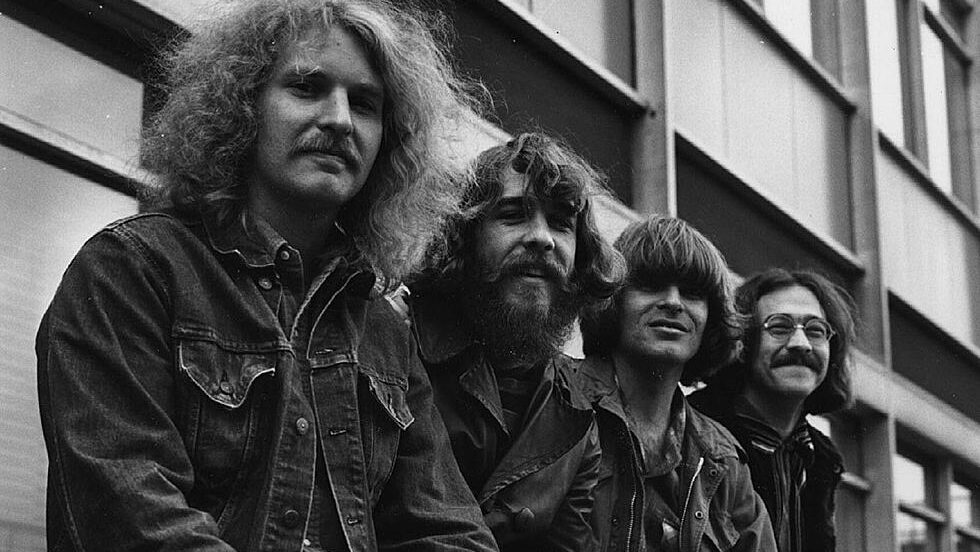
Music nerds love ranked lists. Music nerds love thoughtful commentary. Music nerds love carefully curated playlists. Catalog Crawl provides all of these things and more. In these features, Strange Currencies takes an exhaustive look at the discographies of our favorite artists — the ones who reside at the core of our music obsession.
Aside from The Beatles — and even that is a maybe — has there ever been a rock band more capable of uniting such a disparate audience as Creedence Clearwater Revival? Despite their emergence — from the Bay Area no less — at the tail end of the sixties, Creedence has always displayed an innate ability to bridge the dreaded generation gap from which they themselves sprung. Despite the clearly political — often anti-war — sentiments of some of their best-known material, Creedence possessed a working-class authenticity that allowed them to appeal to both ends of the political spectrum. And despite their reputation as a back-to-basics, “meat and potatoes” rock band, their catalog is rich with references to the blues, folk, R&B, country, pre-British Invasion rock ‘n’ roll, garage, psychedelia, and gospel music. Essentially, Creedence were both vivid and ambiguous enough to allow listeners — past, present, and future — to view them in their own preferred light.
And while it’s completely fair to give most of the credit for Creedence’s widespread appeal to John Fogerty — the band’s lead vocalist, lead guitarist, producer, and primary songwriter — this was a genuinely collaborative group throughout much of its life together. In fact, during their formative years in El Cerrito, California — where they were originally known as The Blue Velvets, and later, The Golliwogs — the band was led by Fogerty’s older brother, Tom. However, by the time that they became Creedence Clearwater Revival, the younger Fogerty had asserted creative control over the group.
And that creative control proved to be both critically and commercially lucrative. By the dawn of the seventies, Creedence had unleashed a string of hit singles, acclaimed albums, and sold out concerts, arguably making them the most successful rock band in America. Despite this good fortune, their inner-band dynamic was wrought with turmoil — much of it due to John Fogerty’s uncontested status as the focal point of the group. While the contributions of Tom Fogerty (rhythm guitar), Stu Cook (bass), and Doug Clifford (drums) were essential to the band’s signature sound, it was John Fogerty’s intuitive gift for crafting instantly-classic songs that propelled CCR to stardom.
Those tensions would lead to Tom Fogerty’s departure from the group in 1971. While the remaining members soldiered on for one more record (1972’s poorly-received Mardi Gras), their momentum had taken a critical blow. Creedence would disband in October 1972: an acrimonious split that would play out in both the press and courtrooms over the next handful of decades. Despite the ugliness behind the band’s downfall, the best of the music that they created together — and really, the “best” represents a significant percentage of their total output — remains among the most cherished and recognizable music of its era.
While we’ve always observed a ten-album minimum for a band or artist to be eligible for a Catalog Crawl, I used a little bit of creativity to get Creedence to that threshold. In addition to the group’s seven official LPs, I’ve included their two long-available live albums — Live in Europe (1973) and The Royal Albert Hall Concert/The Concert (1980) — as well as their 1975 collection of pre-fame recordings (as The Golliwogs). As for the playlist, I’ve gathered two songs each from the non-live records, and specifically avoided tracks that were included on the 1976 compilation Chronicle. Consider this playlist a sequel to that collection — even though it had an official sequel, whose track list I avoided researching, for the purpose of coming up with my own unique selection of songs. Enjoy!
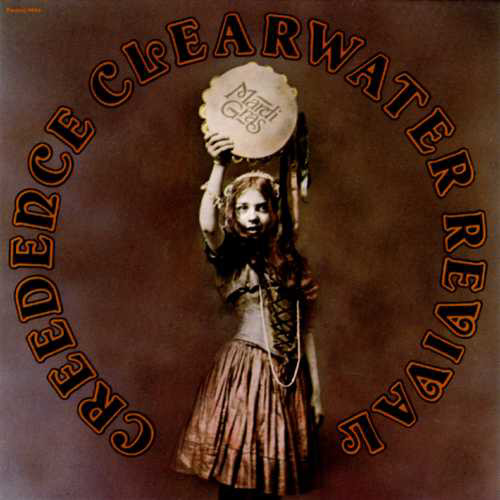
Mardi Gras
1972
(4.5)
10
Yeah, no surprise here. Chances are if you’re reading this, you already know a bit about the story behind Creedence’s final album. In a nutshell: Tom Fogerty had already left the band, and in his absence, John partially ceded songwriting, vocal, and production duties to Stu Cook and Doug Clifford. And while their accounts all differ as to whose idea this actually was, the results of the decision made for a predictably mixed bag.
Each band member contributed three songs, and John Fogerty rounded out the program by singing on a straightforward cover of Ricky Nelson’s “Hello Mary Lou.” As one could probably guess, Fogerty’s tracks are easily the best here: “Someday Never Comes” is heartfelt and legitimately excellent; “Sweet Hitch-Hiker” is a dumb-but-fun rocker; “Lookin’ for a Reason” is overly bitter — and awkwardly placed as the album opener — but it’s decent enough.
It’s in the songs penned and sung by Stu Cook and Doug Clifford that Mardi Gras‘ poor reputation is cemented. Of the pair, Clifford fares a bit better. Only “Tearin’ Up the Country” is bad, while “What Are You Gonna Do” is merely forgettable, and “Need Someone to Hold” is decent. Cook’s songs weren’t great to begin with, but they’re brought down even further by some genuinely poor vocal performances. All in all, with only one true standout track, Mardi Gras makes for a rather ignominious swan song from a legitimately great band.
Two for the playlist: Both “Someday Never Comes” and “Sweet Hitch-Hiker” were included on Chronicle, which makes for some pretty underwhelming leftovers to choose from. “Hello Mary Lou” may actually be the best of these, but it’s a cover that doesn’t really do much to differentiate itself from the original. I’ll start by picking “Lookin’ for a Reason.” Maybe it’ll work better in the context of a solid playlist than as the opener for a bad album. For the second one, I’ll throw Clifford a bone, and go with “Need Someone to Hold.” It’s nothing special, but it’s easily the best of the Cook/Clifford songs.
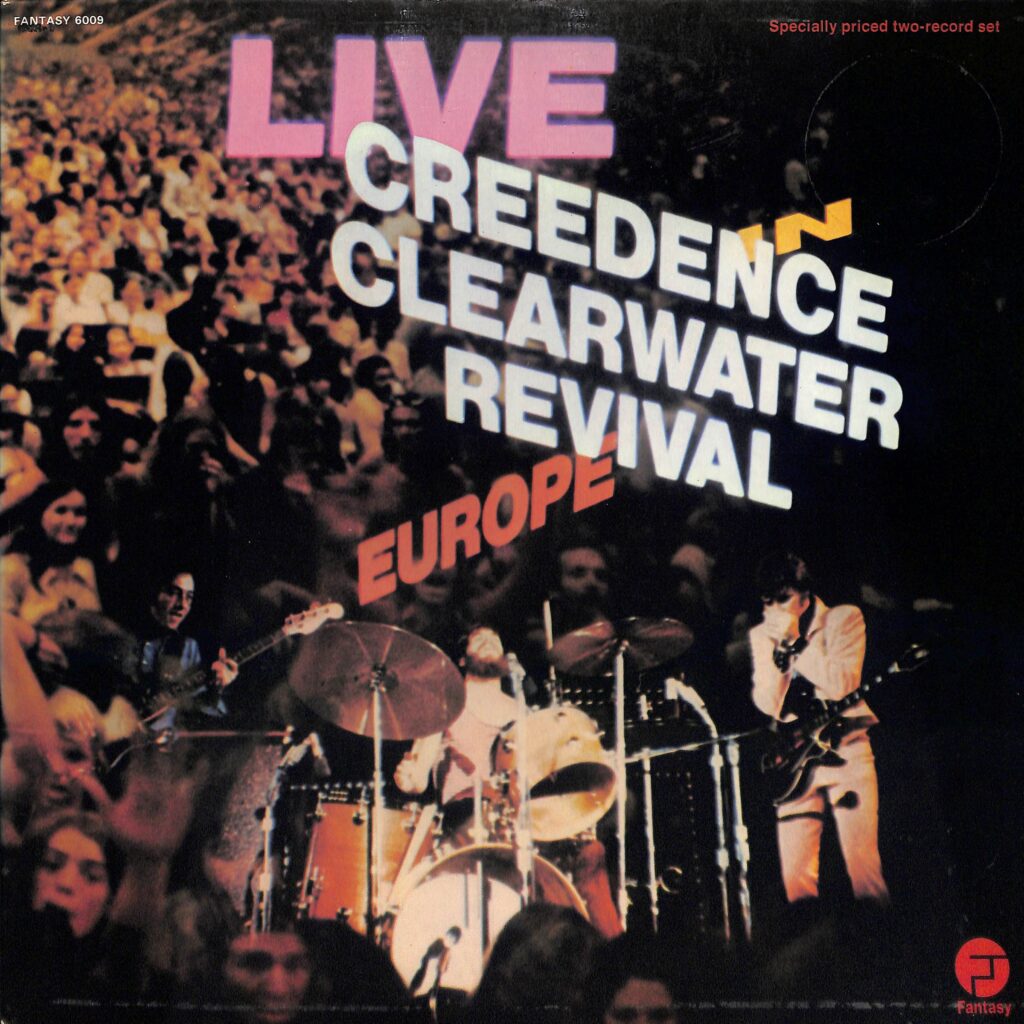
Live in Europe
1973
(6.7)
9
Recorded over the course of a handful of shows on the 1971 tour for Pendulum, Live in Europe finds Creedence in trio mode, as Tom Fogerty had departed earlier that year. The stripped-back arrangements don’t take too much away from the punchiness of the band’s live act, but despite a significant lineup shift, there is still a bit of a “going through the motions” nature to several of these performances.
Perhaps I’m not the best person to ask, as I’m generally not a big proponent of live albums; that is unless they’re something particularly special. And unfortunately, Live in Europe isn’t anything particularly special.

Pre-Creedence (as The Golliwogs)
1975
(7.5)
8
Essentially tracing their evolution from Tom Fogerty-led wanna-Beatles, to a solid garage rock quartet, to the band that we would come to know and love — all while retaining a problematic name that they themselves did not choose — Pre-Creedence is a fascinating listen. But, thanks to the fact that each of the band’s evolutionary stages housed at least a couple of solid tracks, it’s a rewarding listen as well.
And while it may be slightly jarring to hear such an iconic band in its embryonic state, by the end of Pre-Creedence, the steps that lead to CCR feel like a natural progression. In fact, not only has their signature sound begun to emerge, but it does so on songs (“Porterville,” “Walking on the Water”) that are known to those familiar with their later work.
Oh, and there’s a zero-percent chance that the creators of the hit ABC sitcom Dinosaurs weren’t profoundly influenced by this compilation’s cover art.
Two for the playlist: It’ll sound a bit out of place with the rest of the tracks on the playlist, but the first one that I’m gonna pick is the 1964 debut single “Don’t Tell Me No Lies.” For a Bay Area band, they do a pretty convincing impression of the Merseybeat sound, and while it’s a far cry from the style that they would make their name on, it’s plenty charming nonetheless. Even better is the cracking 1966 A-side, “Fight Fire.” This is the band at their garage-iest, and again, while it bears little resemblance to the CCR that we know today, it’s a great track.
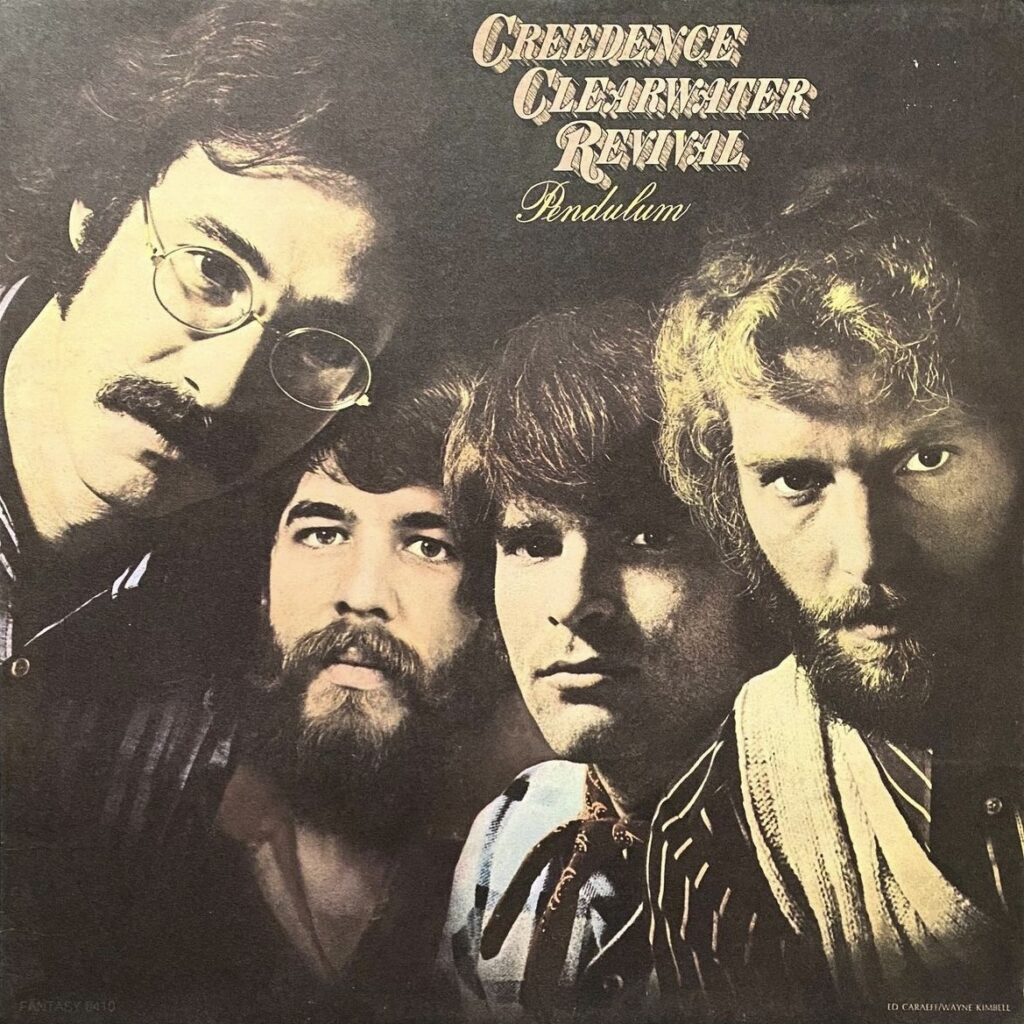
Pendulum
1970
(7.6)
7
Tom Fogerty’s last album with CCR doesn’t quite manage to capture the magic of the band’s previous five records, but Pendulum remains a dark horse fan-favorite regardless. Almost-certainly reflecting the inner-group turmoil that would lead to the elder Fogerty’s looming departure, Pendulum is defined by a notably wearier sound — one augmented by the uncharacteristically heavy presence of keyboards.
Album centerpiece, “Have You Ever Seen the Rain,” stands as John Fogerty’s last truly untouchable Creedence composition; and its upbeat B-side, “Hey Tonight,” is another clear highlight. Elsewhere, Pendulum is dotted with tracks that tend to take longer than usual to reveal their charms, but which reveal their charms nevertheless. It’s all capped off by “Rude Awakening #2”: a cryptic and experimental instrumental that is arguably the most divisive — and certainly one of the more fascinating — tracks in the band’s discography.
Two for the playlist: As a song, the opening “Pagan Baby” might not rank with Fogerty’s best, but the extended instrumental outro of the track shows off the underrated instrumental synergy that Creedence had developed by the time of their last album as a quartet. Elsewhere, there’s an elegiac quality that makes “(Wish I Could) Hideaway” one of the more impactful songs from Pendulum, and it also does a fine job of showing off the album’s use of the Hammond B3 organ.
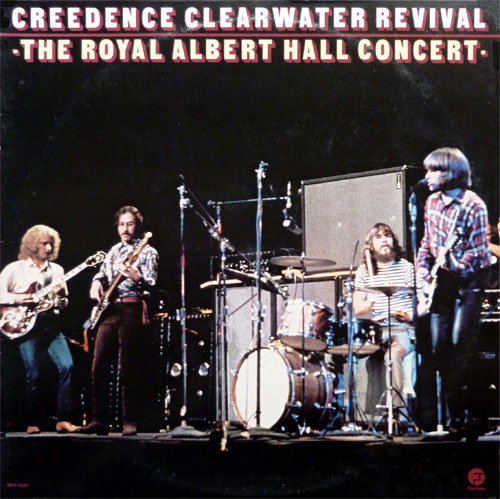
The Royal Albert Hall Concert
1980
(7.8)
6
Okay, this one is way better than Live in Europe, even if that’s the only one of the two that was actually recorded in Europe. Funnily enough, this set — originally released as The Royal Albert Hall Concert, and eventually reissued as just The Concert — was recorded in Oakland, near the band’s hometown of El Cerrito, California.
Mislabeling aside, this is simply a better live document of Creedence Clearwater Revival than Live in Europe. While the set list isn’t radically different, Concert features better sound, sharper performances, and the full-band lineup — as it was recorded in early 1970, at the peak of the band’s power. I still wouldn’t label it as ‘essential,’ but if you’re picking between these two live albums at a record store, go with this one.
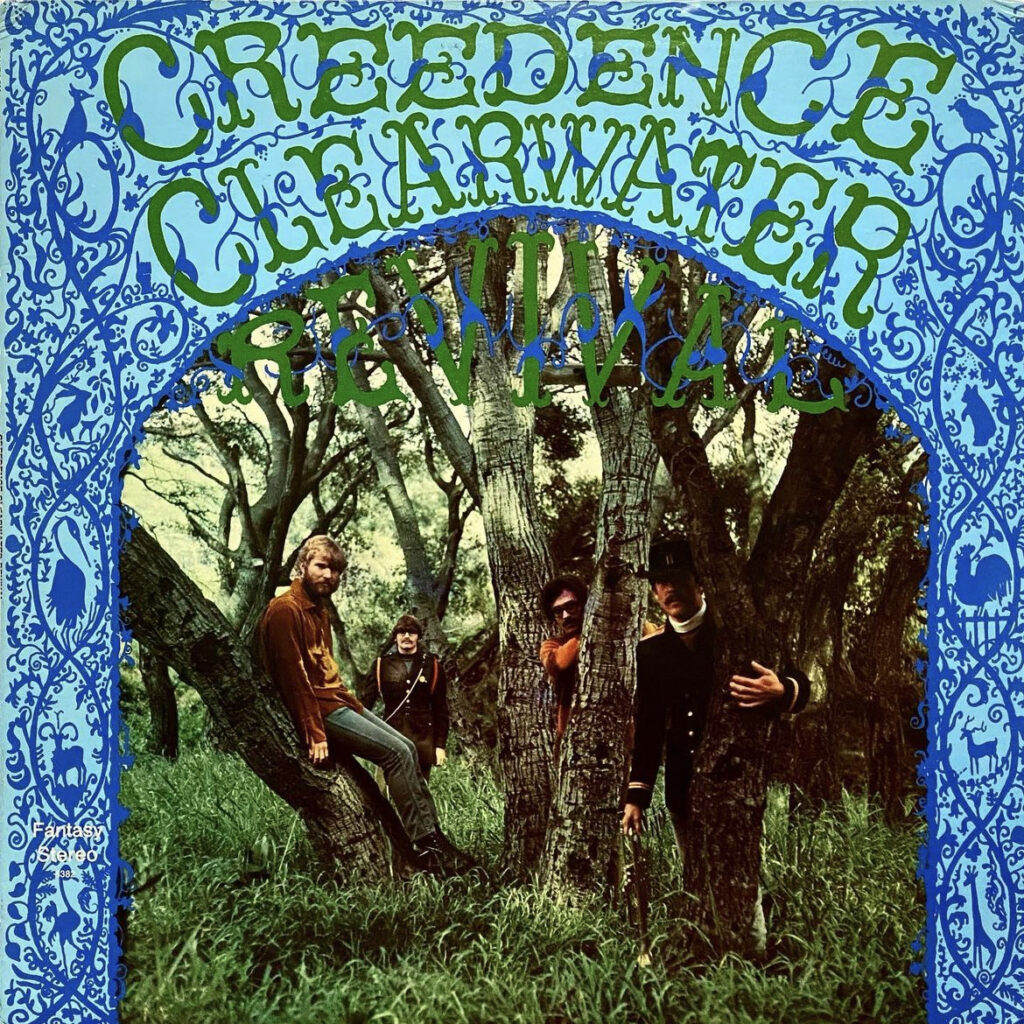
Creedence Clearwater Revival
1968
(8.3)
5
You know right off the bat that there’s something special at play here, as Creedence tears into a version of “I Put a Spell on You” so apocalyptic that it makes Screamin’ Jay Hawkins’ classic take sound like child’s play by comparison. While special attention is rightfully paid to John Fogerty’s vocal and guitar work on the track, the epic swell of the rest of the group is truly something as well. Though the band never again conjures such an arresting sound on the remainder of this debut — though the full-length version of “Suzie Q” found here comes close — there’s plenty left that impresses. It doesn’t take the blues quite as far ‘out there’ as say Captain Beefheart had done on his own debut the previous year, but it probably comes closer than you remember.
The truly disorienting thing about Creedence Clearwater Revival is that John Fogerty’s songwriting is uncharacteristically deemphasized. Three of the album’s eight tracks — including the aforementioned highlights — are covers, and none of the originals stand amongst the band’s best-known material. Nevertheless, the originality of the group’s sound, and the clearly apparent talents and charisma of its leader, make for one hell of an introduction.
Two for the playlist: Fogerty’s presence as a front man, and the ebb and flow provided by Stu Cook and Doug Clifford, are laid bare in the Side B opener “Ninety-Nine and a Half (Won’t Do).” While it doesn’t quite reach the climactic heights of the A-side standouts, it demonstrates what each member brought to the band in its early career. In addition to being an excellent song, album closer “Walk on the Water” creates a foreboding atmosphere in its subtly psychedelic elements, which include backwards masking and other tape effects. It’s one of the best non-hits in the band’s discography.
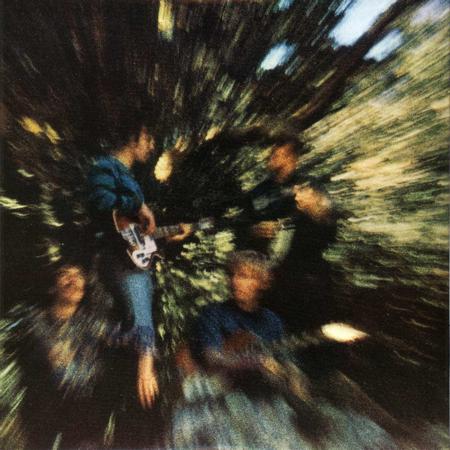
Bayou Country
1969
(8.6)
4
For a lot of listeners, Creedence’s sophomore record represents their true arrival. Dialing back the psychedelic elements of their 1968 debut, Bayou Country was definitely the work of a band settling into their signature sound; but even more than that, it saw John Fogerty penning his first truly classic original material. In this regard, two songs stand out in particular. The first of these is the quasi title track, “Born on the Bayou”: a captivating little piece of myth-making that helped to define the group’s “swamp rock” style.
Then there’s “Proud Mary,” which stands as the first of those Fogerty tracks that seem to have been pulled from some sort of celestial collective consciousness. Whatever superlative you want to use (“all-timer,” “standard,” “Americana defined”) it’s a no-doubt classic. People will be singing it until the end of time.
Elsewhere, Bayou Country aptly displays the folk-blues-rock hybrid that Creedence were already becoming well-known for. They get jammy at times, but in a more elemental way than on the swirling psychedelia of the self-titled debut. In fact, one could argue that these extended workouts are more of a vehicle for Fogerty’s lead guitar work than a full-on showcase for the entire band.
Two for the playlist: I’ve cross-referenced my copy of Chronicle at least half-a-dozen times, in mild astonishment that “Born on the Bayou” was not actually one of Creedence’s “20 Greatest Hits.” Since it’s eligible, it’s a no-brainer. On the jammier end of the spectrum, the closing “Keep on Chooglin'” was a staple of the band’s live set, where it typically closed the program. Even after listening to the song countless times, I have no idea what chooglin’ is, but I’m sure it’s fun.
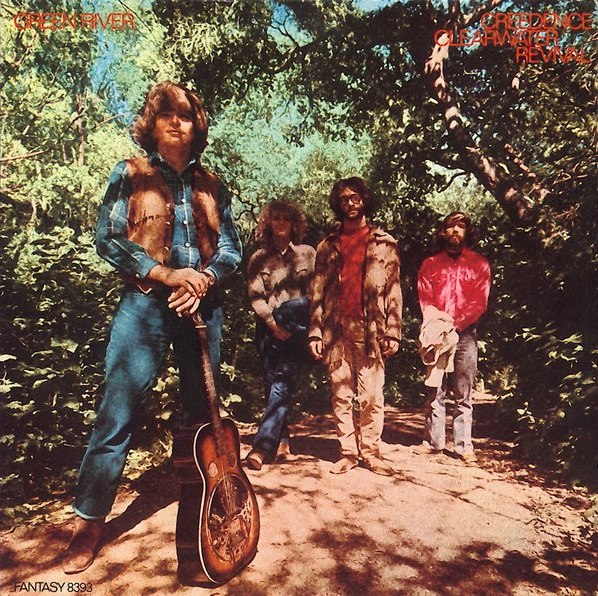
Green River
1969
(9.2)
3
In many ways, Creedence’s second album of 1969 is cut from the same cloth as its predecessor. Like Bayou Country, Green River is paced by a classic swamp rock opener (the title track), and an absolute John Fogerty masterpiece (“Bad Moon Rising”). Where Green River truly establishes itself as the band’s best record to date is in the supporting tracks, which far surpass those on their first two LPs.
First, “Lodi” is another Fogerty everyman classic — nearly on par with anything in the group’s body of work. There’s also the great rave up “Commotion,” and the downtrodden (and seemingly autobiographical) ballad “Wrote a Song for Everyone.” And while not quite at the same level, the remaining four tracks — including a stirring take on “The Night Time Is the Right Time” — are all worthwhile additions to the catalog, even if they haven’t ascended to “the canon.”
Two for the playlist: Easily one of the best songs to be excluded from Chronicle, “Wrote a Song for Everyone” is a bit of a gut-punch even out of context, but considering that John Fogerty had literally written multiple universally-beloved songs, his lament over a failure to communicate is both palpable and profound. Elsewhere, “Sinister Purpose” is one of the great underrated CCR album cuts. Its jagged guitar work made the eventual cover version by fellow NorCal’ers Pavement seem inevitable.
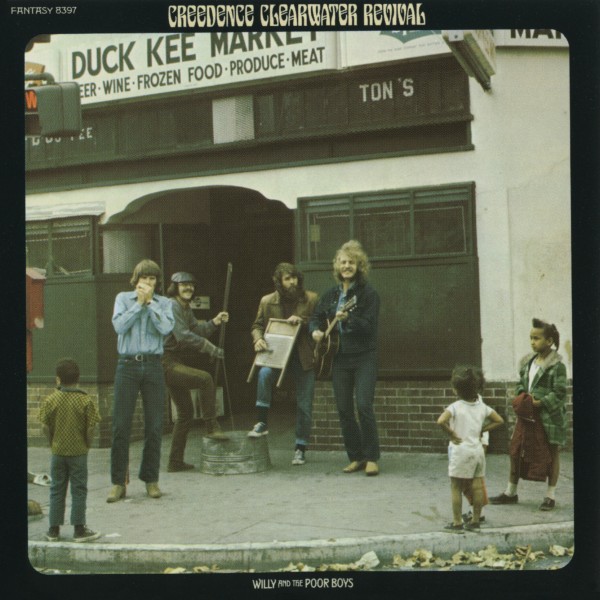
Willy and the Poor Boys
1969
(9.3)
2
Among the many late-sixties trends that Creedence bucked, one of the most significant was that of the concept album; or even just the thematically-consistent album, for that matter. Whether this ultimately hurt or helped them, it’s not too hard to imagine how their catalog could be arranged into different, more stylistically-cohesive records.
And in much of 1969’s Willy and the Poor Boys, the basis of two such records could be found. On one hand, you have several songs that draw from the deep well of American social music. In addition to the well-worn standards “Cotton Fields” and “The Midnight Special” you have John Fogerty’s own instant-classic, “Down on the Corner,” which stands as one of the group’s most recognizable tracks.
And on the other side, you have some of the band’s most overtly political material. Another CCR all-timer, “Fortunate Son” is still too powerful to be worn down by its ubiquity. Plus, there’s “Don’t Look Now” (which contains enough political undertones to where it didn’t feel out of place when covered by Minutemen on their 1984 masterpiece, Double Nickels on the Dime), the cryptic commentary of “It Came Out of the Sky,” and the minimalist Nixon critique of the closing “Effigy.”
But perhaps the genius of John Fogerty was found in the subtle suggestion that all of this material was political. After all, “Cotton Fields” and “Midnight Special” — both of which hold strong associations with Lead Belly — could be read as protest songs of a bygone era (I mean, the latter is pretty clearly one). And it doesn’t take too much imagination to read into coded messaging in the seemingly-benign “Feelin’ Blue,” or even “Down on the Corner.”
So forget what I said. This is a concept album. And it’s a fucking great one.
Two for the playlist: One of the band’s best straight-ahead rockers, “It Came Out of the Sky” is an early album highlight. It’s just a minor detail, but I’ve always loved Doug Clifford’s incessant crash symbol that marks the song’s final chorus and fade out. While I’d like to pick “Don’t Look Now” or “Cotton Fields” (which obliterates The Beach Boys’ version), I have to give my second pick to “Effigy.” One of John Fogerty’s most evocative songs, it provides an impactful conclusion to a legitimately outstanding record.
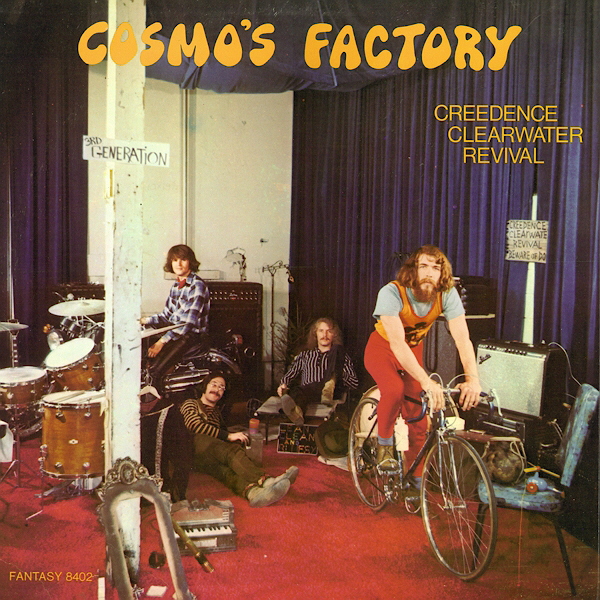
Cosmo’s Factory
1970
(9.8)
1
The rapid-fire release of Creedence’s studio LPs — coupled with the band’s relatively-strong adherence to a signature sound — often leads those records to get lumped together as a single body of work, rather than being viewed as seven distinctly different albums. Despite this, 1970’s Cosmo’s Factory manages to easily separate itself from the rest of the pack.
Rather than any major stylistic diversion, it’s the uniform quality of these songs that establish Cosmo’s Factory as CCR’s finest record. Granted, several of these tracks had already been released as singles in the months leading up to the album’s release — more of a standard practice today than it was in 1970 — but it’s that consistency of quality that helps these eleven pieces cohere into something even more fulfilling than the impressive sum of its parts.
And while one could gripe that Cosmo’s is padded out with four covers (ignoring that one of those four is an all-timer), the seven original John Fogerty compositions found here are nothing short of stunning. All of them. From the ramshackle crescendos of “Ramble Tamble,” to the charming playfulness of “Looking Out My Back Door,” to the rock ‘n’ roll banger that is “Travelin’ Band,” to the ominous “Run Through the Jungle,” to the gospel-tinged “Long as I Can See the Light,” to the power-pop of “Up Around the Bend,” to what may be Fogerty’s greatest-ever song in “Who’ll Stop the Rain,” this is a remarkable track list in both depth and breadth.
Two for the playlist: Even though seven of the eleven songs on Cosmo’s Factory found their way onto Chronicle, one of the very best tracks in the band’s discography, “Ramble Tamble,” didn’t make the cut. It’s easily the biggest no-brainer inclusion on this entire playlist. Though the remaining three excluded tracks, all of which are covers, are worthwhile — sure, even “Ooby Dooby” — I’m gonna bend the rules a little for the last pick. While the album’s other cover song, “I Heard It Through the Grapevine,” is on Chronicle, it appears in a truncated form that takes away much of the power from the 11-minute album version. I’m gonna go with the full take, which —alongside “Ramble Tamble” — helps to establish an oft-overlooked link between CCR and Marquee Moon.


